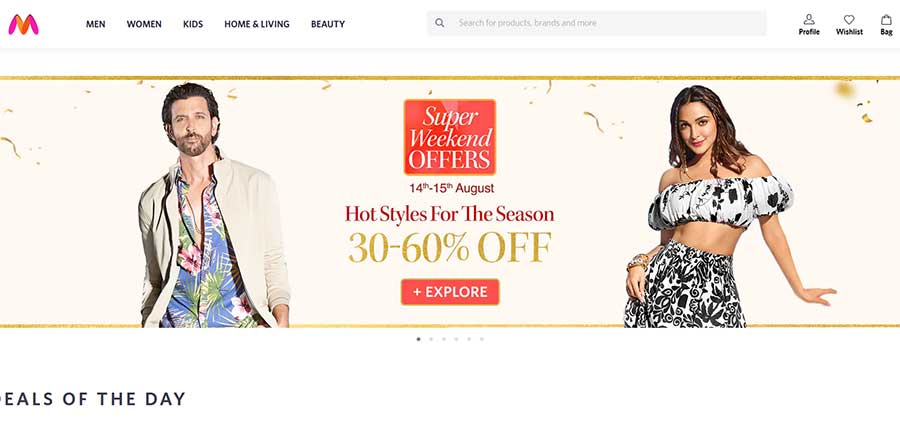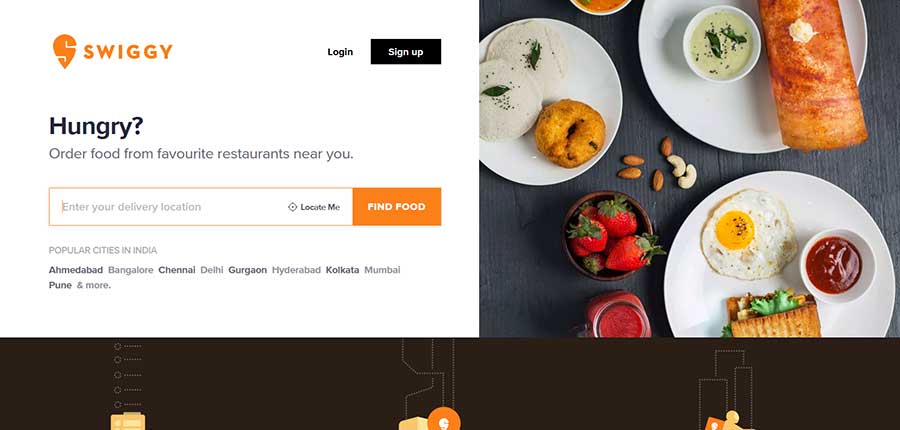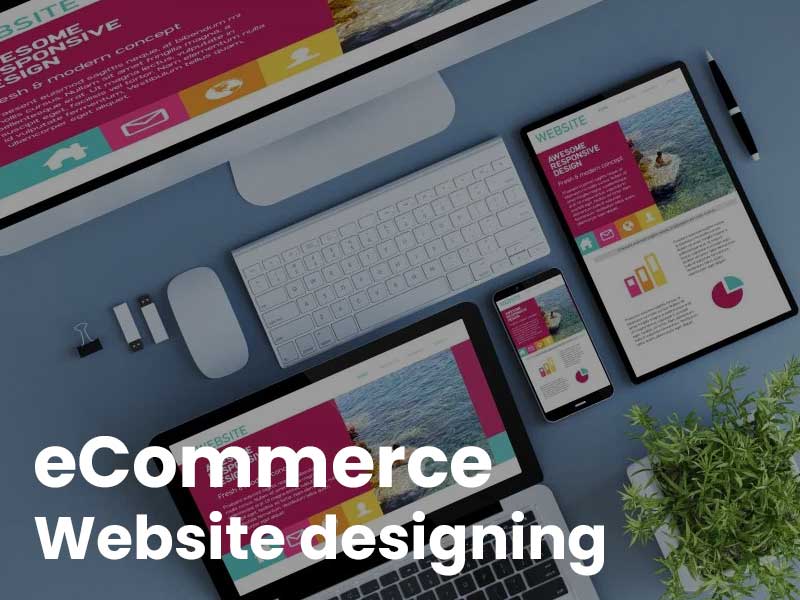Ever since the focus from offline shopping has shifted to online shopping, potential customers have been able to easily access greater product inventories maintained by brands like Amazon, Walmart, Best Buy, etc. When it comes to website designing, a developer’s goal usually boils down to making the website easy to navigate, eliminate the problems that affect its performance, and is intuitive. Over the course of time, more and more offline retailers are developing their e-commerce infrastructure in order to gain a competitive edge and improve their market sustainability.
Benefits of having good e-commerce website design
Access to more markets
A website can be made so that it can be accessed from anywhere around the world and if a brand’s logistics support it, it can deliver its products or render its services in most countries with ease. This improves an organization’s sustainability as a country’s market instability is less likely to affect the entire business.
Ease of purchasing for customers
Traditionally customers were required to leave their houses to get even the essential commodities. E-commerce has made browsing through a lot of products at once easier for the customers and simplified the payment process with options like Cash on Delivery and payment through e-wallets.
Reduction in time spent on shopping
This is a big one. Conventionally, buyers had to roam around a store to find the product that they wanted to buy and had to queue up to reach the payment counters. This added a lot of time spent on activities that weren’t productive. It caused buyers to feel fatigued after a shopping session and discouraged them to go the store. E-commerce had made the process of searching for products and purchasing them extremely simple as buyers can now use search engines and filters to find the exact product they are looking for from the seller’s inventory.
Achievement of cost-effectiveness for sellers
Many online sellers don’t have a physical office or don’t have to invest in logistics infrastructure to sell products. This has not only made it easier for anyone to sell online but also reduced the costs involved in selling products as essential facilities are provided by platforms like Amazon, Flipkart, etc. to sellers.
Availability of a wide range of products and services
E-commerce platforms have made it possible for buyers to get access to a plethora of brands with different offerings. It was impossible to get access to these many products and services at once since buyers don’t possess the resources to build a library of products.
Factors of significance during the designing of e-commerce websites
Mobile friendly interface
As portable devices like mobile phones, tablets, and smartwatches take over the market in terms of the number of devices sold each year, it is imperative to design your website in a way that is compatible with smaller screens. Many online stores have mobile apps for the most popular mobile operating systems like Android and iOS in an effort to better optimize the user interface of their online platforms for mobile devices.
Usability
E-commerce websites are meant to display and encourage the purchase of products and services offered by sellers. If the interface of the website doesn’t allow easy navigation or makes it difficult for the users to find the product they are looking for, it will result in lost sales opportunities and a decrease in traffic.
Optimization
Like any other website, e-commerce websites need to be optimized to decrease loading times and have their rankings increased in the google search engine results using SEO or Search Engine Optimization.
- If Google’s search engine finds the content on the website to be relevant, the website is more likely to rank higher. This results in more traffic as people searching to buy online would see the links for optimized websites first and is likely to visit them.
- Statistics about website loading times suggest that every second a website takes to load more than it should, a customer’s satisfaction drops by 16%.
- It also suggests that a load time of more than 5 seconds increases the likelihood of users bouncing by 90%.
- Google also flags websites that have long loading times in an effort to discourage poorly performing websites.
- Coding used in the website can be better optimized to streamline the website operation to reduce load on servers and decrease loading times
- CSS libraries like bootstrap and angular might slow the website down and can be replaced by advanced CSS by using media query.
Design elements and essential website features
User reviews
Reviews are testimonials by people who have already purchased and used a particular product. User reviews play a vital role in a customer’s purchase decision. A website developer should focus on maintaining legitimacy in these reviews by developing algorithms that remove profane reviews, review approval systems, and verifying that the reviews aren’t bogus and are written by verified buyers.
Content on the website
Content that is in the form of text and images should be optimized in a manner that it maintains the overall visual appeal of the website while decreasing load times. High-resolution images should be displayed with attractive-looking banners that clearly show the promotional offers and discounts. The text content should also be optimized so that it adds to the relevancy of the website and helps it rank higher in the search results.
Intuitive search bar
Most products on an e-commerce platform are found through search engines. Having a search engine with live search is a must-have for an e-commerce website. Filtered searches further improve the search query and provide a user with specific search results.
Support for international languages and currency
Building an e-commerce website requires considering the needs of the target audience. Websites aiming for international markets must add support for various languages and allow payments from different international payment portals.
User accounts
Maintenance of user accounts allows an e-commerce platform to log essential information related to their users like their delivery address, purchase history, payment card information, and allows an organization to better manage disputes or complaints that might arise in the future. It also enables the website server to procure a user’s e-mail ID where the user can be notified of a brand’s latest offerings and promotions.
Diversity of payment options
With different portals and methods to pay that are available in the market, developers should aim to add various payment methods to facilitate easy payments as any problems a user might face during the payment process might result in revenue loss.
Types of e-commerce websites
Static Content site
These websites are ’digital showrooms’ for a company’s products. They are meant to display product information that is necessary for a customer to make an informed purchase decision. These websites don’t change that often since something needs to be changed only if there has been a new product that needs to be added to the online catalog. Due to this, they are termed ‘static content sites’. These websites are cheaper to design and maintain since they don’t need frequent additions or deletions of content and don’t possess features like the ability to pay online.
Examples of this type of website design can be:
- Ford: The website serves the purpose of displaying the cars and their features
- 3M: The website shows 3M’s line of products, the product would have to be bought from 3M distributors.
Transactional sites
These types of websites are made for the purpose of displaying a store’s inventory and facilitate online payments. The product is then released from the store to be delivered to a customer’s location. Customers can search, order, provide information necessary for the delivery of a product, etc. using transactional sites. These are usually expensive to design because they enable online payments and require software systems to do so.
Examples of this type of website design can be:
- Vijay Sales: The website allows users to search and buy products from the Vijay Sales store
- Croma: The website displays Croma’s inventory. Customers can make the payment for the product online
Online Marketplace/auction sites
Here, the sites act as a platform to host buyers and sellers and bring them together to enable transactions of products and services. This type of website has proven to be one of the most successful ones because of its ability to make it easy to sell and buy. Actioners can also take advantage of these platforms in order to sell their possessions and find bidders for them. They also help sellers to avoid expenses that go into building a store or a proprietary website.
Examples of this type of website design can be:
- Amazon: It is the largest online marketplace in the world allowing buyers and sellers to find each other on their website. The website facilitates transactions between retailers and customers
- eBay: The website allows transactions between auctioneers and bidders. Here an advertisement can be posted for the bidders to make offers
Examples of e-commerce website designs

Myntra
Myntra has been one of the most popular clothing brands in India for a few years now. With its attractive discount offers and features like ‘try and buy’, where a customer can get the product delivered and pay for it only when they like it after trying it out, Myntra has gained a lot of momentum since it started. Their website design is simple and intuitive at the same time. Some key takeaways are mentioned as follows:
- A simple all-white color theme that allows maximum visibility of text and images
- The banner and the text has been arranged in a manner that is consistent with how humans skim through pages, from left to right allowing visitors to see the image first
- Inclusion of quick links and search bar with live search
- Spacing between design elements gives the website a clean look
- High resolution and professional-looking images and banners
- To encourage a purchase, a ‘Deals Of The Day’ section can be seen at the bottom for the best offers and discounts

Amazon
Being the most successful online marketplace platform, Amazon is a trillion-dollar company. It strives to be the “Earth’s most consumer-centric company” which has contributed to evolving it into a platform with world-class service and unmatched inventory. Amazon also sells its line of products under the name of ‘AmazonBasics’ which offers premium products at affordable prices. A few key takeaways from Amazon’s website are as follows
- The design hosts the live search bar and quick links in the header section to enable users to easily find products
- Easy access to account sign-in option, shopping cart, etc. to allow quick navigation
- Attractive interface with a blocky design where every section is dedicated to different types of products and offers
- Simple webpage design that isn’t loaded with design elements, therefore, making it easier for the website to load quickly.
- A hamburger menu in the top left that includes all the categories of products Amazon offers is further organized into subcategories
- Visually pleasing banners that are consistent with the overall color theme

Apple
Apple is the biggest company when it comes to market capitalization, it also has one of the highest selling products, the iPhone. Apple has built a reputation based on its industry-leading technology that is unmatched by any other competitor. Their website looks like a work of art with animation that synchronizes with scrolling and colors that are vivid and at the same time are non-intrusive. Here are few pointers to consider from Apple’s website design.
- The website is full of clever punchlines that attract attention and are intended to differentiate Apple from the other brands when it comes to its marketing.
- Unlike most brands which have a drop-down menu for products, Apple has provided links to their most popular products and services like iPhone, iPad, Apple watch, etc. as quick links right in the website header
- The interface is designed to minimize the crowding of elements with clean and high-resolution images of Apple products and icons that match the color of the background. Images with transparent backgrounds have also been used to make the overall integration of elements look seamless.
- Scrolling down divides the screen space into 4 equal quadrants, each dedicated to various Apple products. One of these quadrants advertises Mac and iPad offers for students which is an effective way to encourage purchase from the target audience as the link to the offer is provided on the front page.
- The color theme is consistent with the grey iPhone color which adds a layer of coherence
- Buttons reading ‘Learn more’ and ‘Buy’ are placed in the center, therefore tempting the visitor to find out more about the product and make a purchase.

Swiggy
Swiggy is an Indian food delivery company that rose to fame through its fast service, excellent customer support, and live order tracking. Swiggy made its name and has been recognized as the largest food ordering and delivering platform. A company that started out in 2014 as a small food delivery service has now expanded its network to over 100 cities. Initially, mostly operating through their app, Swiggy has now a well-developed website design. Here are few key takeaways from Swiggy’s website
- Based on fast food delivery, Swiggy cleverly uses the ‘Unexpected guests’ punchline to indicate a situation where their services would be relevant
- The website wastes no time in getting location information which it will use to show the restaurants that are near the website user.
- The segmented website design allows for a tidy look
- The images used throughout the website are high quality and professionally clicked
- To add to the convenience, buttons for logging in and signing up are available at the top as Swiggy maintains user accounts to log order history and delivery details
- At the end of the homepage, they emphasize the reachability and strength of the network that they have by mentioning all the cities in India that they deliver to, clicking on any of these links would take the user to a page detailing the food specialties of that city

Tesla
Tesla is a venture by one of the most popular inventors Elon Musk. Tesla specializes in electric vehicles and power solutions. It is the leading brand in consumer electric vehicles and greatly helped popularize electric vehicles in the mainstream market. Tesla is gradually developing infrastructures like power stations and the availability of car chargers to expand the usage of electric cars throughout the United States. The design language is chosen by tesla for there is as futuristic as their inventions. Here are a few key takeaways from Tesla’s website
- Clean design that integrates itself with the background
- Quick links to all the car models released by Tesla can be seen at the top for immediate access to information regarding their features, price, etc.
- Usage of icons with transparent backgrounds to make them blend well with the image used as a background
- Provision of a menu in the top right containing the links to their products and solutions
- Scrolling further reveals more high-quality images of Tesla consumer cars and products
- A button to place a custom order can be seen in the bottom half which takes the user to a graphically impressive webpage where they can customize the look of their vehicle’s interior and exterior.


